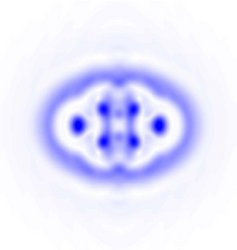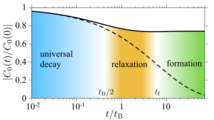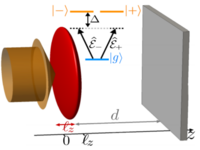
Since the first achievement of Bose Einstein condensation in 1995 in dilute atomic vapor, ultracold quantum gases continually prove to be ideal platforms for exploring the rich and fundamentally important physics of quantum many-body systems. In our research we study the generation and control of atomic interactions by external fields or laser-light, and explore their fascinating and often surprising effects on the properties of such cold quantum matter.

We study the quantum dynamics of a single impurity following its sudden immersion into a Bose-Einstein condensate. The formation of the Bose polaron after such a quench stems from decoherence of the impurity, driven by collisions with the condensate. Using a master equation approach, we derive rigorous analytical results for the decoherence dynamics of the impurity, which reveals different stages of its evolution from a universal non-exponential initial relaxation to the final approach of the equilibrium state of the Bose polaron. The associated polaron formation time exhibit a strong dependence of the impurity momentum and is found to undergo a critical slowdown around the Landau critical velocity of the condensate. The rich non-equilibrium behavior of quantum impurities in a Bose gas revealed in this work is of direct relevance to recent cold-atom experiments, in which Bose polarons are created by a sudden quench of the impurity-bath interaction.

We consider a quasi-two-dimensional atomic Bose-Einstein condensate interacting with a near-resonant laser field that is backreflected onto the condensate by a planar mirror. We show that this single-mirror optical feedback leads to an unusual type of effective interaction between the ultracold atoms giving rise to a rich spectrum of ground states. In particular, we find that it can cause the spontaneous contraction of the quasi-two-dimensional condensate to form a self-bound one-dimensional chain of mesoscopic quantum droplets, and demonstrate that the observation of this exotic effect is within reach of current experiments.